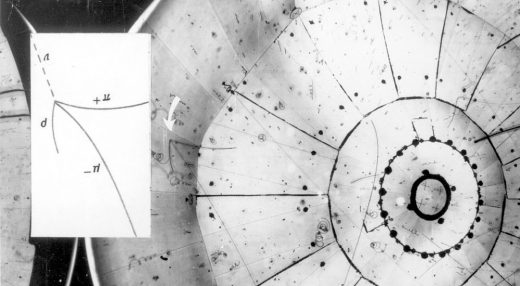Charge: What Is a Charge? Why Does a Particle Have a Charge? What Is the Difference between Positive and Negative Charge?

Photo by Kevin Dooley | CC BY
Ever since we started exploring the world around us, we came across a lot of natural phenomenon and features that are explainable and sometimes mysterious. One such enigmatic feature of the nature is the charge of a particle, the fundamental property on which all our electronics are built upon. The surprising fact about charge is that no one has a clear explanation of what is the source of the charge and why something has a charge.
As far as we have understood, a charge is a physical property of an particle or a sub atomic particle, which is ‘felt’ as an electromagnetic force of repulsion and attraction. Though we call them positive and negative charges, we have no idea what is the real deal behind these charges.
Even I had the same questions when I was in school, reading these concepts for the first time. When my teacher wrote the charge of an electron on the black board, I popped all the wild and curious questions. But soon I learnt that these questions are far beyond our perception and only time and evolution can help us perceive the underlying nature. However, for your curious questions I could give some satisfying answers.
What is a charge?
As mentioned earlier, we take the property of the particle-charge-as the universe grants it to us. It is something that we observe. No one knows why particles possess the charge they have. But we do know how much charge they possess and how it can be applied to make wonderful things using that property.
So the ‘what’ part of your question has the answer from our observations – It is the natural physical property of the particles, for which the source could not be comprehended or known yet.
Why does a particle have a charge?
It is for the same reason why planets have gravity. The have a charge, because that is what they supposed to have by their nature. If we could delve deeper into the subatomic world or even the macroscopic infinity around us, we will be stuck in an infinite ‘why loop’.
What is the difference between positive and negative charge?
As this article is intended more towards the ‘why’ world of physics, I would like to give you an interesting fact about the charges. Except for the sign they possess, there is absolutely no difference between them. The term ‘positive’ and ‘negative’ are just names that are given to these two properties to identify them conventionally. You can even interchange these two names and still nothing would change in an electromagnetic interaction. They are symmetrical, as far as we have observed.
In a general notion, if there are excess of electrons in a particle (e.g. an anion) they are said to be negatively charged. And if a particle has less number of electrons, they are called positively charged particles. Positive-Positive and Negative-Negative = Repels | Positive-Negative and Negative-Positive = Attracts
Maybe in the future, we might know why electrons, protons, and other subatomic particles have charge. But as it is in our nature to be curious, there would be another set of ‘why’ questions popping the next moment.
The universe is awesome, isn’t it? Stay curious.
This post was first published on February 16, 2015.











Einstein said, “It can scarcely be denied that the supreme goal of all theory is to make the irreducible basic elements as simple and as few as possible without having to surrender the adequate representation of a single datum of experience.” To that end, I’m going to ask here: What *is* the charge on a subatomic particle? Google it and you’ll find that nobody really seems to know.
I propose that particle charge is simply a reflection of the direction in time that a particle is traveling, based on entropy. In other words, is the entropy of that particle like watching the break on a pool table rack where all the balls come apart from each other randomly? Or is it like watching all the randomly placed balls on a pool table spontaneously reassemble themselves into a racked triangle?
Consider the following: When a positron collides with an electron, their charges and mass cancel each other out and the result is a photon. Look at the same event from outside of time (like what you seen in a collider’s cloud chamber), where you can see the planet lines of “each” particle. What you’ll see is *one* line, representing the different vectors of “each” particle, directly affected by the vector of the photon. The photon impacts the particle line, is absorbed, and reverses the direction in time that the “particle” is going. Now it’s easy to see that the positron and the electron were the same particle all along.
Physicists seem to have lost touch with the old saying that “curiosity killed the cat”. Be careful about looking for knowledge in an irresponsible manner. Either you’re going to learn something that you’ll wish you’d never let out of that Pandora’s box, or else you’re going to destroy reality.
A taste of this possibility was when the idiots who made the atomic bombs permanently polluted our planet with massive amounts of radioactive cesium, strontium, plutonium. They engaged in what amounted to basically a prolonged nuclear war against Utah, Nevada, New Mexico, etc. There are still nuclear test areas you couldn’t pay me enough money to travel through.
Another place I won’t go near is Hanford, Washington, home of the breeder reactor used to make plutonium. A relative of mine lived in Pasco, WA (only a few miles downstream from Hanford) for a few years. When he moved back, shortly thereafter he came down with thyroid cancer and lymphomas.
What I’m trying to say here, is that IMO, physicists and their unbridled curiosity in making the LHC at CERN need to be stopped and that piece of equipment needs to be torn down.
Check out C-Symmetry!